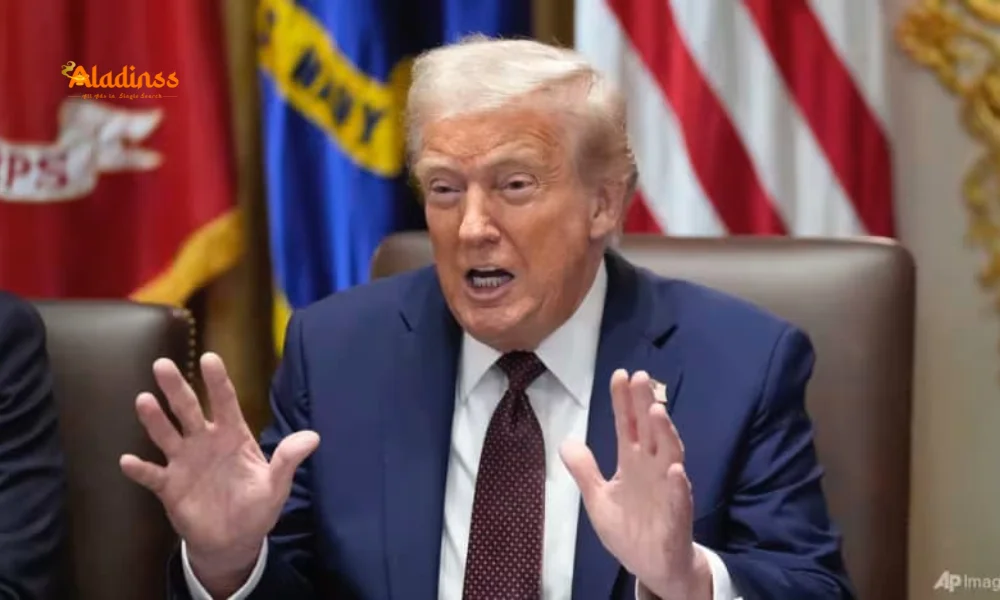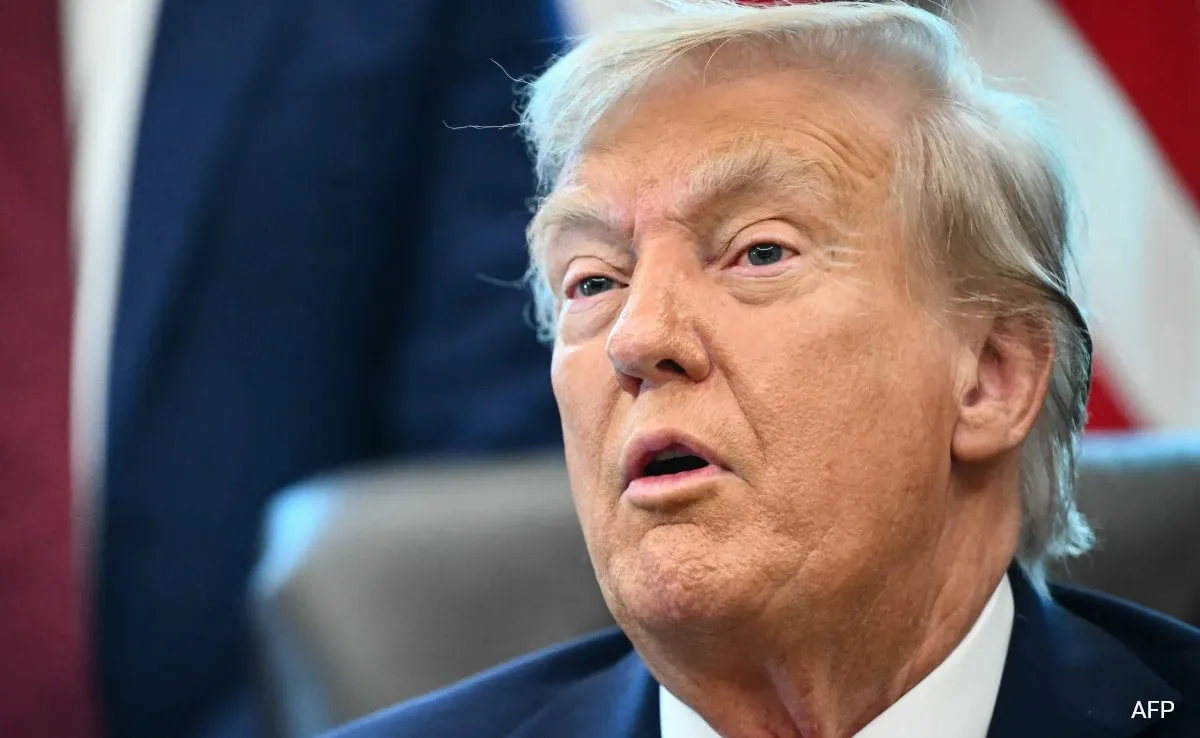Trump Vows Supreme Court Fight After Tariffs Ruled Illegal

Trump Vows Supreme Court Fight After US Court Rules Tariffs Illegal
On August 29, 2025, a significant ruling by the US Court of Appeals for the Federal Circuit in Washington declared most of President Donald Trump’s global tariffs illegal, marking a major setback for his aggressive trade policy. The 7-4 decision, which upheld a May ruling by the US Court of International Trade, found that Trump exceeded his authority under the International Emergency Economic Powers Act (IEEPA) by imposing sweeping tariffs on nearly every country, including key allies and adversaries. Despite the ruling, the court allowed the tariffs to remain in place until October 14, giving the Trump administration time to appeal to the Supreme Court. In a fiery response, Trump called the decision “incorrect” and warned that removing the tariffs would be a “total disaster” for the United States. This article explores the ruling, Trump’s reaction, and the potential implications for US trade policy.
The Federal Court’s Ruling: A Blow to Trump’s Tariff Strategy
The US Court of Appeals for the Federal Circuit delivered a 7-4 ruling, stating that Trump’s use of the IEEPA to impose tariffs was unlawful. The court emphasized that the statute grants the president significant authority to address national emergencies but does not explicitly include the power to impose tariffs, duties, or taxes. “The statute bestows significant authority on the President to undertake a number of actions in response to a declared national emergency, but none of these actions explicitly include the power to impose tariffs, duties, or the like, or the power to tax,” the court noted. This decision centered on two key sets of tariffs: the “reciprocal” tariffs imposed on April 2, dubbed “Liberation Day” by Trump, which applied a 10% baseline tariff on most global imports, and specific tariffs on China, Canada, and Mexico aimed at addressing fentanyl trafficking and trade imbalances.
The court’s majority, comprising one Republican and six Democratic appointees, cited the “major questions doctrine” from recent Supreme Court rulings, which limits the executive branch’s ability to claim sweeping powers without clear congressional authorization. The tariffs, described as “unbounded in scope, amount, and duration,” were deemed to exceed the IEEPA’s intended purpose, which historically focused on sanctions and embargoes rather than broad trade taxes. The ruling upheld a May decision by the US Court of International Trade, which had similarly found that Trump’s actions overstepped his legal authority.
Trump’s Defiant Response on Truth Social
Reacting swiftly to the ruling, President Trump took to his social media platform, Truth Social, to denounce the court’s decision as “incorrect” and the work of a “Highly Partisan Appeals Court.” In a lengthy post, he declared, “ALL TARIFFS ARE STILL IN EFFECT!” and vowed to escalate the fight to the Supreme Court. Trump argued that the tariffs are essential for protecting American workers, manufacturers, and farmers, asserting that their removal would lead to a “total disaster” for the country. “If allowed to stand, this Decision would literally destroy the United States of America,” he wrote, warning that the US would no longer tolerate “enormous Trade Deficits and unfair Tariffs and Non-Tariff Trade Barriers imposed by other Countries, friend or foe.”
Trump’s rhetoric emphasized the tariffs’ role in supporting “MADE IN AMERICA” products and revitalizing the US economy. He claimed that for years, other nations used tariffs to exploit the US, and his policies were reversing this trend to make America “Rich, Strong, and Powerful Again.” The White House echoed this sentiment, with spokesman Kush Desai stating, “President Trump lawfully exercised the tariff powers granted to him by Congress to defend our national and economic security from foreign threats.” Attorney General Pam Bondi also confirmed the administration’s intent to appeal, signaling a high-stakes legal battle ahead.
The Tariffs in Question: Scope and Impact
The tariffs at the heart of the legal battle were introduced as part of Trump’s broader trade strategy, which he launched with much fanfare on April 2, 2025, calling it “Liberation Day.” These included a 10% baseline tariff on imports from nearly every country, with higher “reciprocal” tariffs—ranging up to 50%—imposed on nations with which the US runs trade deficits. Additionally, Trump imposed targeted tariffs on China, Canada, and Mexico, citing issues like fentanyl trafficking and immigration as national emergencies justifying the levies. These tariffs, enacted under the IEEPA, have been a cornerstone of Trump’s economic policy, aimed at boosting domestic manufacturing and reducing trade deficits.
By July 2025, the tariffs had generated $159 billion in revenue, significantly exceeding expectations and more than doubling the previous year’s figures. However, critics, including small businesses and Democratic-led states, argued that the tariffs imposed substantial costs on American consumers and businesses, estimating an additional $1,200–$2,800 per household in 2025. The legal challenges, consolidated in cases like V.O.S. Selections v. Trump, contended that the tariffs were unconstitutional and economically harmful, prompting the courts to intervene.

What’s Next: The Path to the Supreme Court
The Federal Circuit’s decision to stay the ruling until October 14 provides the Trump administration a window to appeal to the Supreme Court, which is widely expected to take up the case due to its significant economic and constitutional implications. The Supreme Court, with its current composition of six conservative justices (three appointed by Trump) and three liberals, will likely face intense scrutiny over its handling of the case. Legal experts suggest that the court may focus on the boundaries of presidential authority under the IEEPA, particularly in light of recent rulings reinforcing the “major questions doctrine.”
If the Supreme Court upholds the appeals court’s ruling, the administration could face significant financial consequences, including the potential need to refund billions in collected tariffs. The Justice Department has warned that such an outcome could lead to “financial ruin” for the US Treasury, a claim echoed by Trump’s dire warnings of a “Great Depression” scenario. The ruling could also disrupt ongoing trade negotiations with countries like the European Union, Japan, and the United Kingdom, which rely on the threat of tariffs as leverage. Ashley Akers, a former Justice Department trial lawyer, noted that a loss could weaken the administration’s negotiating strategy, potentially emboldening foreign governments to resist or renegotiate trade terms.
Alternative Legal Tools for Tariffs
While the IEEPA-based tariffs face legal challenges, Trump retains other mechanisms to impose import taxes, though they are more limited. The Trade Act of 1974 allows tariffs of up to 15% for a maximum of 150 days against countries with significant trade deficits, but this falls short of the sweeping authority Trump has claimed. Section 232 of the Trade Expansion Act of 1962, used previously for tariffs on steel, aluminum, and autos, requires a formal Commerce Department investigation and is tied to national security concerns, limiting its flexibility. These alternatives, while viable, cannot replicate the scale and immediacy of the IEEPA-based tariffs, potentially constraining Trump’s trade strategy.
The administration has also explored other avenues to maintain its trade agenda, with Treasury Secretary Scott Bessent and Commerce Secretary Howard Lutnick warning that invalidating the tariffs could cause “irreparable harm” to US trade deals. The Congressional Budget Office’s estimate that tariffs could reduce US deficits by $4 trillion over the next decade has bolstered the administration’s case, though critics argue that the economic costs to consumers and businesses outweigh these benefits.
Broader Implications for US Trade Policy
The Federal Circuit’s ruling has far-reaching implications for US trade policy, which has been reshaped by Trump’s aggressive use of tariffs. The decision casts doubt on the legality of tariffs that have underpinned deals with major trading partners, including the European Union, Japan, and South Korea. While the administration has modified tariff rates for some countries, the underlying legal framework remains under scrutiny. A Supreme Court ruling against Trump could force a reevaluation of these agreements, potentially leading to economic uncertainty and strained diplomatic relations.
The case also highlights a broader constitutional debate about the balance of power between the executive and legislative branches. The court’s emphasis on tariffs as a “core Congressional power” underscores the limits of presidential authority in trade policy. Neal Katyal, an attorney for the plaintiffs, hailed the ruling as a “win for our Constitution,” arguing that it reaffirms the principle that presidents must operate within the rule of law. As the legal battle moves forward, the outcome will likely shape the future of US trade policy and the scope of executive power for years to come.
Comment / Reply From
No comments yet. Be the first to comment!











